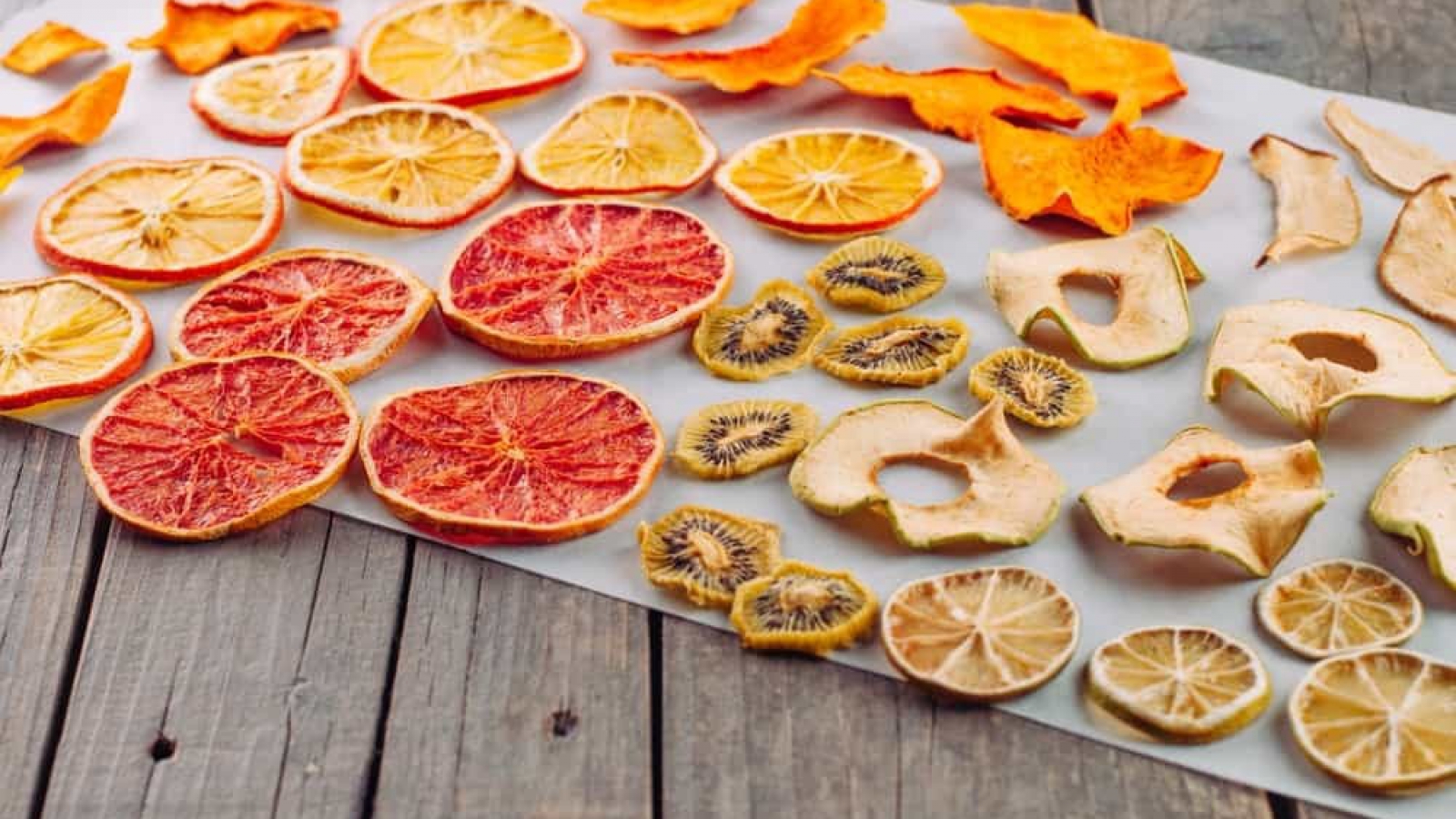Dehydrating Fruits and Vegetables for High-Quality Export

This post is also available in:
This post is also available in:
![]() Español (Spanish)
Español (Spanish) ![]() Ελληνικά (Greek)
Ελληνικά (Greek)
Dehydrating Tropical Fruits & Vegetables for High-Quality Export
Dehydration of tropical fruits and vegetables is a preservation process that requires the right techniques and machinery. This article explains the methods of dehydrating tropical fruits and vegetables, focusing on small and medium-scale farmers and entrepreneurs seeking high-quality export opportunities. Farmers can unlock the full potential of their tropical produce for international markets by understanding dehydration, utilizing suitable machinery, and implementing effective dehydration techniques like sun drying, conventional air drying, and heat pump drying. This article gives you an idea about dehydration and the in-detailed process, with examples that will be explained in the next upcoming articles.
What is Dehydration in Fruits and Vegetables?
The deterioration process starts as soon as the fruits and vegetables reach maturity, even before harvesting. Fruits and vegetables are perishables, and once this process starts, it is irreversible, resulting in the loss of many of the original, desirable qualities. Dehydration is the process of removing moisture from fruits and vegetables, resulting in their preservation and extended shelf life. By reducing water content, dehydration inhibits the growth of microorganisms and enzymatic reactions, while retaining nutritional value, flavor, and texture. Dehydrated tropical fruits and vegetables offer convenience, concentrated flavors, and increased market opportunities.
Tropical Fruits and Vegetables
Tropical countries have a variety of fruits and vegetables that are well-suited for dehydration. Examples include mangoes, bananas, pineapples, papayas, jackfruits, guavas, sweet potatoes, yams, taro, and cassava. These tropical produces have vibrant colors, unique flavors, and high nutritional profiles, making them desirable in the global market. Dehydration of tropical produce preserves its flavors, nutrients, and colors while extending its shelf life. The dehydrated snacks keep the essence of the fruits, intensifying their natural sweetness. Additionally, dehydrated tropical vegetables like taro and sweet potatoes are grounded into powders for various purposes.

Dehydration Techniques and Methods for Fruits and Vegetables
Solar-assisted Sun Drying in Fruits and Vegetables
Solar-assisted sun drying is a sustainable and cost-effective method of preserving fruits, vegetables, and various food products. This technique utilizes solar energy to remove moisture from the produce, extending its shelf life. The process involves arranging the food items on drying racks or trays and exposing them to direct sunlight while ensuring proper airflow. The combination of solar heat and natural air circulation dehydrates the food, retaining its nutritional value and flavors. Solar-assisted sun drying offers an environmentally and friendly approach to food preservation. But this method depends on the weather conditions and needs frequent inspection to prevent heat buildup in warmer seasons. The quality is lower than conventional air drying.

Conventional Air Drying in Fruits and Vegetables
Conventional air drying is another dehydration method. It involves exposing the sliced fruits and vegetables to natural air circulation in a well-ventilated environment. Proper air circulation and ventilation are important parameters for efficient moisture removal. Conventional air drying is a low-cost option that can yield high-quality dehydrated products. This dryer operates at 50-60°C (122-140 °F) of temperature and drying time depending on the moisture content and type of the fruit or vegetable.
Heat Pump Drying in Fruits and Vegetables
Heat pump drying is a more advanced technique that utilizes controlled heat and airflow. It involves using a heat pump system to remove moisture from the produce. Heat pump dryers can control temperature and humidity, allowing for more efficient dehydration and a shorter drying period. This method is suitable for large-scale operations but may need a higher initial investment. The quality is greater than conventional air drying due to low drying temperature 40-45°C (104-113 °F) and time. Also, reducing relative humidity develops an extra vacuum within the drying chamber and supports the drying process. Dried fruits and vegetables provide an excellent export quality product with attractive color, texture and aroma.
What is Flash Drying in Fruits and Vegetables
Flash drying is an efficient method for dehydrating fruits and vegetables, offering more advantages over traditional drying techniques. Flash drying removes moisture from produce by using hot air at high velocities, preserving its nutritional value and extending its shelf life. This technique is used for vegetables and jams to produce dehydrated powders on a large scale. Furthermore, the fast drying process enables quick production within a short time, making flash drying ideal for large-scale commercial operations. The resulting dehydrated products have a longer shelf life, allowing producers to meet export market demands.
Osmotic Dehydration in Fruits and Vegetables
Osmotic dehydration is another technique used to preserve tropical fruits and vegetables while maintaining their natural flavors and nutrients. In this process, the produce immersed in a sugar or salt solution creates a concentration gradient that draws out excess moisture. Osmotic dehydration helps keep the fruits’ original texture, color, and taste while reducing water activity and inhibiting microbial growth. Osmotic dehydration is a gentle and efficient method that allows us to enjoy tropical fruits and vegetables in a convenient and preserved form, which is perfect for snacks or confectionery.
What temperature is good for dehydrating Fruits and Vegetables?
Dehydration temperatures mostly vary between 50 to 60°C (120-140 °F). Above 60°C is not used as it discolors and destroys nutrients. On average most fruits and vegetables are dehydrated at 55 °C. These temperatures are for conventional air drying. In heat pump drying, the temperature is normally 40-45 °C (104-113 °F).

Benefits of Dehydration in Fruits and Vegetables
Dehydrating tropical fruits and vegetables offers the following benefits:
- Nutritional preservation: Dehydration retains the essential vitamins, minerals, and antioxidants present in the produce.
- Concentrated flavors: Dehydrated fruits and vegetables offer intense flavors, making them ideal for various culinary applications.
- Extended shelf life: Removing moisture extends the shelf life of the produce, reducing spoilage and minimizing post-harvest losses.
- Lightweight and convenient: Dehydrated products are lightweight, making them cost-effective to transport and store.
What are the Packaging Requirements for dehydrated Fruits and Vegetables?
Proper packaging is important when it comes to preserving the quality and freshness of dehydrated fruits and vegetables. The packaging for these products should have excellent barrier to moisture and air to prevent moisture absorption and to maintain their crispy texture. Additionally, packaging materials should provide protection against light to prevent color and nutrient degradation. Clear labeling with product information, including the name, origin, and nutritional content, is essential for consumer appeal and keeping with regulatory standards. By investing in suitable packaging, we can ensure that dehydrated fruits and vegetables keep their taste, nutritional value, and quality for an extended shelf life.
The Export Market for dehydrated Fruits and Vegetables
The export market for tropical dehydrated fruits and vegetables has grown remarkably in recent years. Identifying the target market is important for successful export. Researching market trends, consumer preferences, and demand is essential. Tropical fruits and vegetables such as mangoes, papayas, pineapples, bananas, jackfruit, and local yams are suitable for dehydration due to their unique flavors and high nutritional value. Dehydrated tropical fruits and vegetables can export to various international markets, including the United States, Europe, and the Middle East. To succeed in the export market, also ensure that the products meet their target markets’ quality and safety standards. This includes maintaining international food safety regulations and implementing good manufacturing practices to maintain the quality of their products during storage and transportation.
Dehydrating tropical fruits and vegetables for high-quality export requires the application of scientific knowledge, appropriate machinery, and effective techniques. By adopting suitable dehydration methods such as sun drying, conventional air drying, or heat pump drying, farmers can unlock the full potential of their tropical produce. With proper packaging and by targeting the right market, small and medium-scale farmers and entrepreneurs can establish a successful and sustainable business in the dehydrated fruit and vegetable industry.
Further reading
How to Dehydrate Tropical Fruits for Natural, Healthy Snacks
References
Markam, S., 2022. Drying and dehydration of fruits & vegetables. The Pharma Innovation Journal, 11(10): 1981-1986.
Mercer, D.G., 2014. An introduction to the dehydration and drying of fruits and vegetables. Donald G. Mercer, University of Guelph.
Sagar, V.R. and Suresh Kumar, P., 2010. Recent advances in drying and dehydration of fruits and vegetables: a review. Journal of food science and technology, 47, pp.15-26.
ur‐Rehman, S. and Awan, J.A., 2012. Dehydration of fruit and vegetables in tropical regions. Progress in food preservation, pp.191-209.








































































